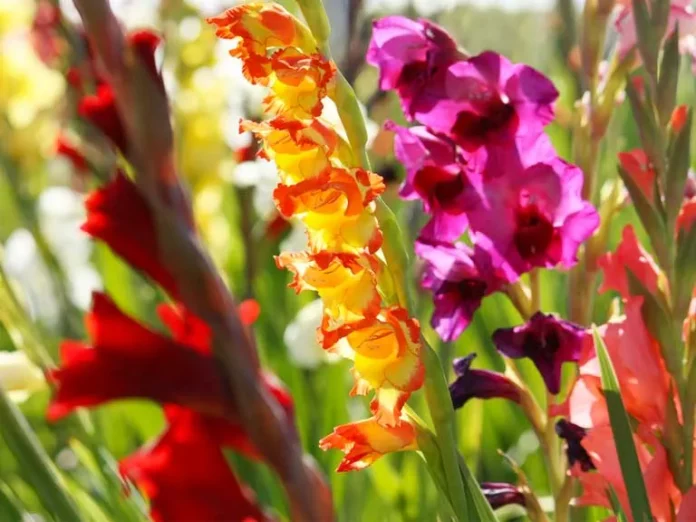In times of mourning and sorrow, people look for meaningful connections and a sense of community. People can’t go through hard times like this alone, and while encouraging words and statements of support help, they can only go so far. Sometimes all people need is a silent acknowledgement of what they’re going through, and simple gestures to tell each other that they’re not alone.
This is why things like sympathy flowers are a thing across multiple cultures, religions, and countries all over the world – they’re a simple way to acknowledge a grieving person’s pain and make sure they don’t feel alone.
Other things you can do for a grieving family include making sure some of the funeral arrangements are taken care of, that the person closest to the family has eaten and is taken care of, and that they have the support they need through this tough time.
If you want to send sympathy plants to the family though, here are some that you should consider Bouqs.
1. Purple Hyacinths

Purple hyacinths represent regret and sorrow, which makes them an appropriate funeral flower choice. They can be an acknowledgement of the sorrow and loss the deceased person’s family is going through, or they can be an expression of your own sorrow.
These flowers have a long history of being associated with sorrow – in Greek mythology, Hyacinths are said to have grown from the spilled blood of one of Apollo’s dead lovers.
They come in a whole range of colors from white to blue to purple, but the purple hyacinths are most commonly used in times of mourning.
2. Roses

Different colored roses mean different things, which is why certain colors can be a good option for your sympathy bouquet.
Here are some of the kinds of roses you can give a grieving family member and what each of them means:
- Dark pink: Dark pink roses symbolize gratitude. They can mean that you’re thankful for the life of a loved one, or that you’re thankful to them for something they did for you in their life.
- Red: One of the most popular types of roses, red ones stand for love and can be a great way of expressing your love and affection for either the deceased or their family and friends. There’s no time like a funeral to express your love for either the living or the dead, which is why red roses might be a good option.
In south asian cultures, red roses are a very common funeral flower and red flower petals are often spread over the graves of loved ones as a gesture of care, respect, and love. Family members who visit the grave are also consoled by the presence of red rose petals or roses, marigold flowers, or jasmine garlands left on the grave – it tells them that there are other people who care about their deceased family member as well as them.
- Yellow: Yellow roses represent friendship, and can be a nod towards your friendship with the deceased and how knowing them changed your life for the better.
- White: If you want to give a nod to the purity and innocence of the deceased person’s soul or the way they spent their life, white roses (and white flowers in general) are a good idea. White flowers are also very common in funeral settings, which makes white roses a good choice for any funeral.
- Peach: Peach roses symbolize sincerity and gratitude. This makes them a great choice for expressing just these emotions to a family you’re close to – let them know you’re thankful for everything the deceased or the family has done for you, and that you’re there for them in turn.
3. Lilies

Lilies represent renewal and rebirth, and can be used to symbolize a new beginning for the deceased person’s soul. It carries extra significance for a religious family – by giving them white lilies, you’re expressing your hope for a good journey in the afterlife for the dead person’s soul.
If the deceased person died young, lilies can be a good option since they stand for purity and youth in non-funeral settings.
4. Carnations

Carnations carry a very special meaning for Christian families – pink carnations have been said to be created from the tears of the Virgin Mary. Even other colors stand for a lot of meaningful things – white stands for innocence, and red represents love.
5. Violets

In a lot of literature, violets have been mentioned as a symbol of a life that ended too early or before its time. In other cultures, they have been used as a flower symbolizing remembrance, and they hold a special place in a lot of European cultures because of their significance in Greek Mythology – they are said to be the flowers Persephone was picking when Hades or Pluto took her to the underworld.
6. Gladioli

If you want something that tells the grieving family how much faith you have in them and their ability to get through these tough times, consider getting them Gladioli, the flowers that stand for exactly that.
By giving a family Gladioli, you’re telling them that you know times are hard right now, that you’re here for them, and that you’re confident they will be okay eventually. Sometimes people do need a reminder that things will get better eventually, especially when they have trouble seeing it themselves.
7. Orchids

Orchids are a very meaningful and deep sympathy flower. Their meaning in the language of flowers is roughly “eternal love”, and who doesn’t want to be reminded of that in some way or another when they’re mourning the passing of a loved one?
You can tie the meaning of the flower in with a heartfelt note or a small letter to accompany the flowers. A small sympathy gift can also be a good idea to go with the flowers and note.
8. Chrysanthemum

It might surprise you, but in Europe these cheerful flowers are a very common and popular funeral flower. They’re commonly left on graves and used in funerals.
In America, the flowers have a more cheerful meaning – get well soon wishes for the receiver.
Combine the two, and you can think of Chrysanthemums as a flower that both acknowledges the pain and hardships the deceased person’s family is going through as well conveys wishes that they get through this hard time soon.






